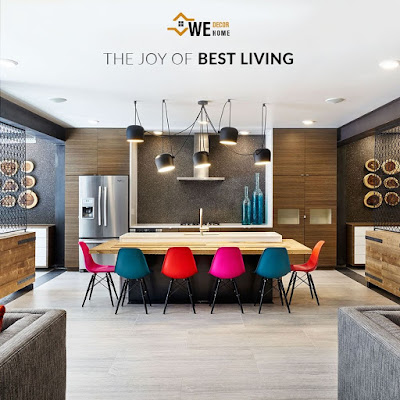Workspaces
have moved away from traditional, matrix cubicle scenarios. Now with the
changing trends cubicles, one is replaced by open and functional ones to
encourage collaboration and interaction among employees.
 |
| Office interior designer in Mumbai |
These
spaces are known for their blended designs, these spaces are modular but with
many adaptable elements. If you assign the designing task to a
professional office
interior designer in Mumbai he/she will design that enables you to see where
who is sitting, what they are working on. Blended working space designs also
effectively end the hierarchical seating that is inheriting in a traditional workspace.
You
must just find your boss sitting next to you and HR Executive has a separate
cabin. So being a premium Commercial Interior Designer in Mumbai offering a range of services
such as quality interior
work at affordable prices. We provide you some creative
ideas to build a blended workspace to enhance your employee's productivity.
Blended workspaces are typical splits into different zones:
1. Active Space
These
are good old tables of different shapes and sizes. When the activity demands
every team member needs to sit together for those long tables that can be used.
For smaller teams, oval-shaped tables can be used. The beauty of this design is
its fluidity. If the team aims to sit nearby window then there is no
requirement of shifting spaces other than their laptops. Wireless technology
has its advantages, minimal usage of paper has reduced the need for cabinets
and drawers. Now with the changing trends, most offices use a cabinet to store
a laptop and other computer necessaries. This has helped interior designing
companies to plan the office floors with more ergonomic furniture and that
would increase the comfort factor for the employees.
2. Breakout spaces
One
of the main things which have changed the complexion of office interior design
is the need for breakout spaces. Stress at the workplace is shaping the way for
many designing companies to design breakout spaces that would help relax the
employees, improve engagement, interaction, and put the fun factor back in the
work. These can be typically a table tennis space, a pool table, etc. The idea
is to make the office area a fun zone but a productive place for employees and
high officials.
3. Privacy Pods
Not
all the work in the office requires a team effort. Some stuff can be done in
seclusion. An open design can be sometimes distracting and noisy. For this
privacy, pods can be a great solution for it. The designs of the pods play a
huge role in providing psychological comfort and focus to the people and it
helps in boosting the productivity levels. Pods are usually designed for a
single employee and some best designers will bring the theme of spaceships or
good and old payphones to give employees a whole new experience.
4. Lounges
While
breakout spaces are mostly situated away from the active workspace, lounges are
kept within the active area. The idea is to provide the employees to just sit
down, read, check messages, or even work on their laptops Lounge areas can be
traditionally designed with a comfortable sofa, recliner, or even hammock.
5. Client Zones
These
are again areas within the active space where clients can informally talk about
future deals. Most often this area is designed to provide the client with the
view of how the company works and their working culture.
6. Collaborative Zones
These
are smaller conference rooms. The traditional conference had a sitting space of
around 40 people but with the technological advancements, it has been confined
to only 10 people. Smaller collaborative zones are much sought as the team size
has reduced as days go by.
These can be a glass-encased zone where the entire
team can huddle around the sofa or chairs around the working space. Designing
these collaboration space can be concerning the overall design of the
office.

